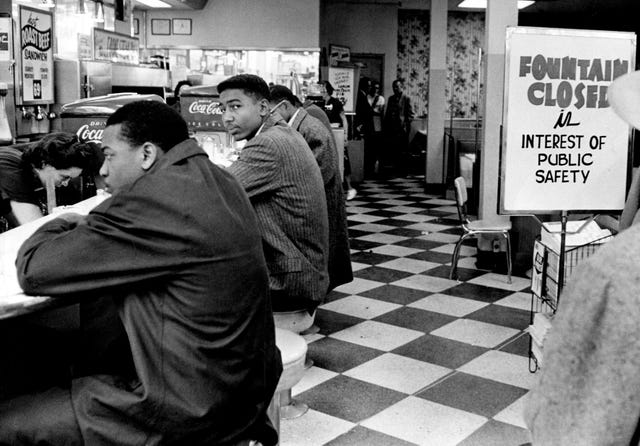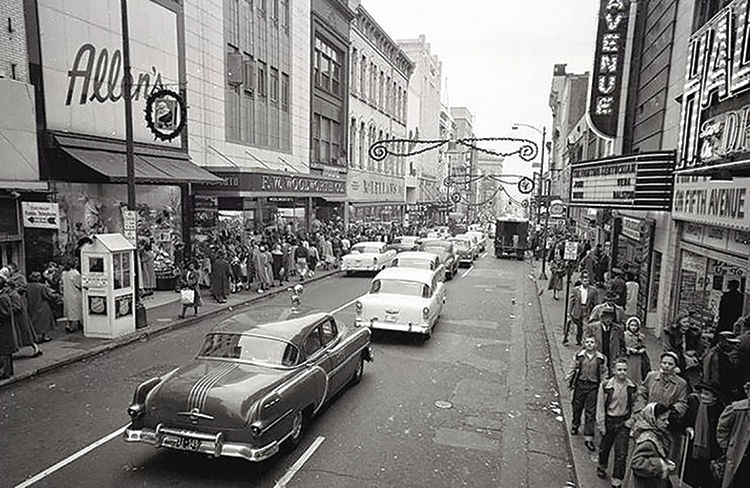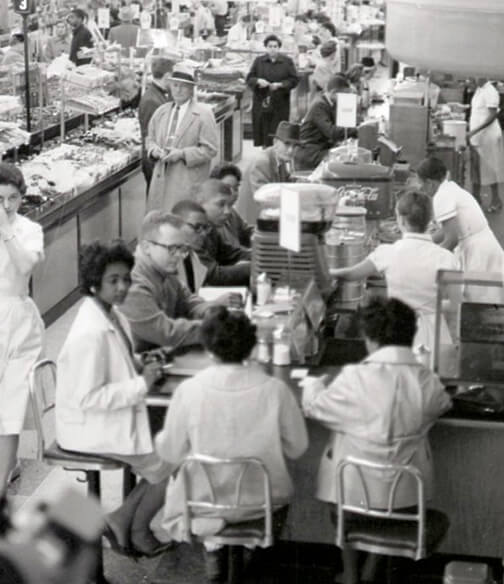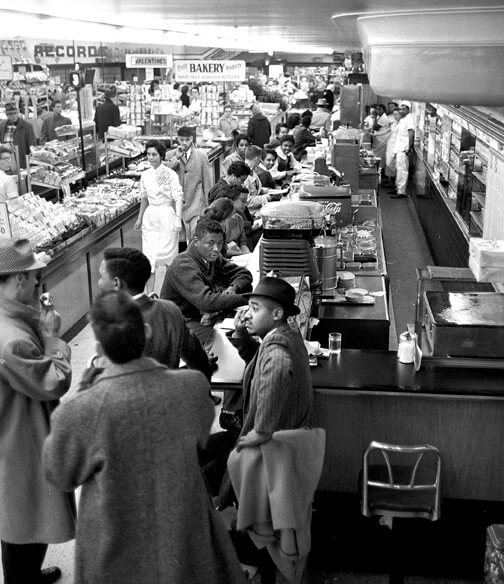he building and businesses at 223 Rep. John Lewis Way North are a critical piece of Nashville’s history. Upon completion in the 1890’s, the building was home to several businesses before Woolworth opened one of the original “five and dime” stores in 1913. The lunch counter at Woolworth opened in 1925 to offer an affordable meal to shoppers and workers. Still operating under the Jim Crow laws and customs of the 1890s, African Americans were prohibited from eating at public lunch counters in Nashville.
Your Content Goes Here
A Turning Point for Equality
On Saturday, February 13, 1960, after months of studying nonviolent activism, a group of students began the movement to challenge this decades-old practice of segregation. Three different groups of college students, most of whom attended historically Black universities, including Fisk University, American Baptist College, and Tennessee A&I (now Tennessee State), held “sit-ins” at downtown Nashville’s lunch counters including Woolworth, Kress, and McClellan. They were denied service but remained seated at the counters even after being asked to leave.
On February 27, 1960, the integrated student-led movement drew more than 200 protestors to the lunch counters at Woolworth, Kress, McClellan, and Walgreen’s, resulting in national media attention after the students’ nonviolent tactics were met with violent backlash from white citizens, who faced no consequences. Among the protestors arrested was future US Congressman John Lewis, who participated in the sit-in at the lunch counter at Woolworth. A strong challenger of segregation and racism, Congressman Lewis was arrested almost fifty times for nonviolent protest throughout the course of his life. His arrest at Woolworth that day was his very first.
April 11, 1960, brought another wave of African American students and white allies to the first floor lunch counter at Woolworth. When the students arrived at that lunch counter, Woolworth staff immediately closed the first floor counter. Store employees then stood at the stairs going up to the mezzanine lunch counter, only allowing white customers access to the upper level lunch counter. of the store.
On April 19, 1960, terrorists bombed the home of Nashville Civil Rights Attorney Z. Alexander Looby, because of his role as lead counsel for the student protesters. That same day, four thousand Nashvillians, including young John Lewis, marched in silence to the courthouse and confronted Mayor Ben West. Among those marching was Fisk University student Diane Nash, who is credited with asking Mayor West if he felt that segregation at the lunch counters was morally right. Mayor West answered no, and the official process of desegregation at downtown lunch counters began. Change did not happen immediately, but by mid-May, African Americans were being served at some of the lunch counters in the stores downtown, and this form of nonviolent protest was being replicated all over the South.
Today, the building is a registered historic site as part of the Fifth Avenue Historic District in Nashville for its part in the Civil Rights movement.
– Written in collaboration with the Nashville library. –
Your Content Goes Here
Remembering John Lewis – A Legacy of Progress
In the early 1960s, the segregated South witnessed a powerful movement for racial equality, and at the heart of this struggle stood John Lewis, a remarkable civil rights leader. His name became synonymous with courage, resilience, and peaceful resistance. Among his many significant contributions, one event that stands out is the Woolworth sit-ins in Nashville, TN.
As the chairman of the Student Nonviolent Coordinating Committee (SNCC), John Lewis played a pivotal role in organizing the Woolworth sit-ins. SNCC, a prominent civil rights organization, became a driving force behind the fight for justice and equality. Through strategic planning and nonviolent protest, Lewis and the SNCC garnered public support, sparking a transformative era in the civil rights movement.
Decades after the Woolworth sit-ins, John Lewis continued to champion civil rights and social justice throughout his life. His commitment to nonviolence, equality, and voting rights earned him widespread admiration and respect. As we look back on this pivotal moment in history, we honor the enduring legacy of John Lewis and the courageous young activists who fought for a more inclusive and just America.
Historical Moments:
- Organized nonviolent sit-ins during the Nashville Student Movement -1960
- Member of the Freedom Riders and became a pillar of the civil rights movement – 1961
- One of the “Big Six” leaders who attended the March on Washington – 1963
- The “Bloody Sunday” march Lewis participated in led to the Voting Rights Act of 1965
- Served as a U.S. Representative of Georgia’s 5th congressional district from 1987 til his passing in 2020



